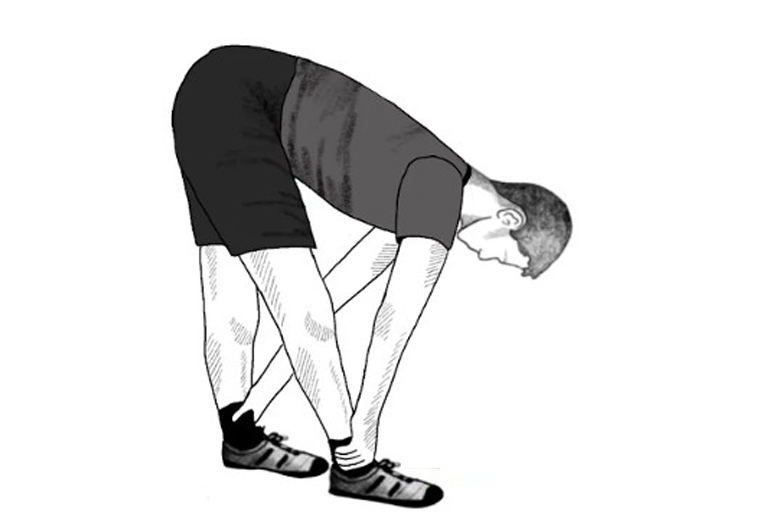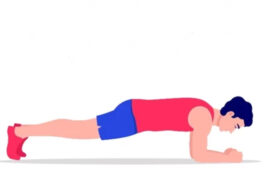The elephant walk exercise, like bear crawls, frog jumps, and bunny hops, is inspired by animal movements. True to its name, the elephant walk involves a bending forward motion that focuses on strengthening the calves, thighs, and lower back. Unlike jumping or moving across the floor, this low-impact exercise helps improve posture and balance. It’s a simple yet effective way to enhance your overall physical health by mimicking the graceful, grounded gait of an elephant, offering additional benefits for flexibility and stability.
The elephant walk exercise is an animal-inspired movement designed to stretch and warm up the posterior chain, which includes the thighs, lower back, hamstrings, glutes, and calves—key muscles involved in movement. According to fitness expert Aman Puri, this dynamic exercise focuses on stretching your body and performing lateral movements. It helps improve flexibility, increase muscle strength, and alleviate stiffness by extending the range of motion. Incorporating this exercise into your routine can boost your overall mobility and muscular balance.
The elephant walk exercise offers several health benefits that enhance overall fitness and well-being. Here’s a detailed breakdown of its advantages:
1. Improves Posture and Core Strength: The elephant walk helps strengthen the core muscles and improves posture by targeting the muscles around the pelvic area and hamstrings. It enhances the strength and flexibility of the back, addressing common issues like poor posture, back pain, neck pain, and even headaches. By focusing on the dorsal chain muscles, this exercise helps maintain stability and control in forward movements, promoting a stronger and more aligned back.
2. Enhances Mobility and Flexibility: This exercise involves a combination of lateral, forward, and backward movements, which helps improve flexibility in the spine, shoulders, and posterior hips. Performing it regularly can increase mobility in these areas, contributing to better overall flexibility.
3. Improves Coordination and Balance: The elephant walk challenges the body’s ability to maintain balance and coordination, particularly by engaging the knees in back-and-forth motion. Regular practice of this exercise helps enhance body awareness and equilibrium, which is crucial for everyday movement and athletic performance.
4. Lowers Chances of Injuries: By reducing muscle stiffness and improving flexibility, the elephant walk lowers the risk of muscle strain and joint wear. It can prevent injuries, especially those related to the back and hips, and also helps in preventing falls by improving balance and coordination.
5. Improves Blood Flow: The dynamic movements of the elephant walk promote circulation, especially in the lower back, hamstrings, and legs. This boost in blood flow increases the delivery of oxygen and nutrients to muscles, enhancing performance and speeding up recovery after workouts.
6. Low-Impact Exercise: Being a low-impact exercise, the elephant walk is gentle on the joints while still providing a dynamic workout. This makes it an excellent choice for people recovering from injuries or those with conditions that require joint protection. However, it’s important to consult a doctor before starting this exercise, especially for those with specific health concerns.
The elephant walk is an excellent exercise for improving core strength, mobility, flexibility, coordination, and overall fitness.
How to do the elephant walk exercise:
- Start in a Standing Position
Stand tall with your feet hip-width apart and your arms relaxed by your sides.
- Lean Forward
Slowly bend forward from your hips, aiming to touch the ground with both hands in front of your toes. Your hands should be placed shoulder-width apart on the floor.
- Bend Your Knees Slightly
As you bend forward, slightly bend one knee at a time. Lift the heel of the opposite foot just above the floor while keeping your legs straight (but not locked). This creates a stretch in your hamstrings and calves.
- Alternate Leg Stretch
While maintaining your forward lean, alternate bending one knee and straightening the opposite leg, mimicking the walking motion. Make sure you’re stretching one leg at a time.
- Straighten Your Legs
After holding the stretch for a moment, straighten both legs. The focus should be on flexibility, so avoid forcing any stretch that feels uncomfortable.
- Repeat the Movement
Continue to alternate bending and straightening your legs as you walk your hands forward in small steps, keeping your body aligned and balanced. Repeat the exercise for multiple steps without standing up fully.
Tips for Proper Form:
- Posture and Balance: Keep your posture aligned throughout the movement. Ensure you maintain balance by slightly bending your knees as needed.
- Controlled Movement: Avoid rushing through the movement or over-stretching. Perform the exercise slowly and with control to maximize the benefits and prevent injury.
- Modification for Limited Flexibility: If you’re unable to reach the floor with your hands, especially for the elderly or those with mobility issues, you can use a chair for support or make the stretch more gentle.
Performing the elephant walk exercise regularly will improve flexibility, mobility, and balance, helping you build strength in the posterior muscles, especially the hamstrings and hip muscles.
While the elephant walk exercise is generally safe and beneficial for most people, there are certain individuals who should either avoid it or perform it under careful supervision:
Who Should Avoid the Elephant Walk Exercise:
- People with Injuries
Individuals recovering from injuries, particularly in the pelvis, hamstrings, shoulders, legs, or lower back, should avoid this exercise without medical clearance. The forward bending and dynamic movements could aggravate existing injuries.
- Pregnant Women
Pregnant women should avoid performing the elephant walk exercise due to the forward bending motion, which can place pressure on the abdomen. This could be uncomfortable or even harmful during pregnancy.
- People with Severe Mobility Issues
Those with severe mobility limitations or those who find it difficult to balance or stretch could risk strain or falls while performing this exercise. Modifications and assistance, like using a chair for support, may be necessary.
- Individuals with Heart or Joint Conditions
People with heart conditions or severe joint issues, especially in the knees or back, should consult a doctor before attempting the elephant walk exercise, as the dynamic movements may not be suitable for everyone.
Important Considerations:
- Always consult with a doctor or fitness professional before starting this exercise if you are recovering from an injury or have any underlying health conditions.
- Beginners or elderly individuals may find this exercise beneficial for improving muscle endurance, flexibility, and balance, but should proceed cautiously and with supervision if needed.
As always, listen to your body and avoid pushing past any discomfort or pain while performing this exercise.
Disclaimer:
The information contained in this article is for educational and informational purposes only and is not intended as a health advice. We would ask you to consult a qualified professional or medical expert to gain additional knowledge before you choose to consume any product or perform any exercise.







